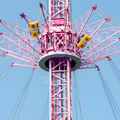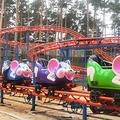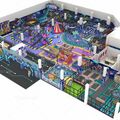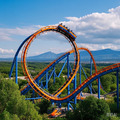Maintaining a two-story carousel requires a comprehensive approach to ensure its continued performance, safety, and aesthetic appeal. Given the complexity of these structures, a well-devised maintenance plan is crucial. This guide outlines the essential components of an effective maintenance strategy for a two-story carousel.
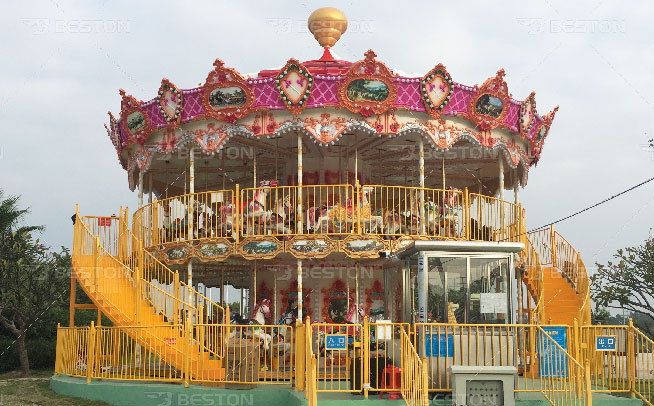
Understanding the Two-Story Carousel
Design and Functionality
A two-story carousel is a sophisticated amusement ride featuring two levels of seating, each providing a unique experience for riders. The design includes intricate mechanisms and structural elements that must be regularly inspected and maintained. Unlike simpler carousels, the added complexity of a 2 story carousel necessitates a detailed maintenance approach to address both operational and safety concerns.
Importance of Regular Maintenance
Regular maintenance is critical to ensuring the carousel operates smoothly and safely. It helps prevent unexpected breakdowns, extends the lifespan of the equipment, and maintains the ride's visual appeal. For outdoor carousels, which are exposed to various environmental conditions, maintaining operational integrity becomes even more essential to prevent weather-related damage.
Components of an Effective Maintenance Plan
Routine Inspections
Routine inspections are foundational to any maintenance plan. These inspections should be scheduled regularly to identify and address potential issues before they escalate. Key areas to inspect include:
- Structural Integrity: Check the framework, supports, and joints for signs of wear, corrosion, or damage. The two-story design requires additional attention to the stability of the upper level.
- Mechanical Systems: Inspect gears, motors, and other mechanical components for signs of wear or malfunction. Regular lubrication and adjustment are essential for smooth operation.
- Electrical Systems: Test the electrical wiring, control panels, and lighting to ensure proper functionality. Faulty wiring or connections can pose safety risks.
- Safety Features: Verify that safety restraints, emergency stop mechanisms, and other safety features are functioning correctly.
Preventive Maintenance
Preventive maintenance involves regular tasks designed to prevent issues from developing. This includes:
- Lubrication: Apply lubricants to moving parts to reduce friction and wear. Ensure that all components, such as bearings and gears, receive proper lubrication.
- Cleaning: Regularly clean the carousel to remove debris, dust, and other contaminants that could affect its performance. Pay particular attention to moving parts and safety features.
- Adjustments: Make necessary adjustments to align components and ensure smooth operation. This includes checking the alignment of the carousel's rotating mechanism and adjusting the tension of belts and cables.
Seasonal Maintenance
For an outdoor carousel, seasonal maintenance is crucial to address weather-related wear and tear. This involves:
- Winterization: Prepare the carousel for winter conditions by inspecting and securing components to prevent damage from freezing temperatures. Cover sensitive parts to protect them from snow and ice.
- Summer Care: Ensure that the carousel is adequately ventilated to prevent overheating. Check that all weather-resistant coatings are intact and effective.
Record-Keeping and Documentation
Maintaining detailed records of inspections, maintenance activities, and repairs is essential for tracking the carousel's condition over time. This documentation helps identify recurring issues, plan for future maintenance, and ensure compliance with safety regulations. Records should include:
- Inspection Reports: Document the findings of each inspection, including any issues identified and actions taken.
- Maintenance Logs: Record all preventive maintenance tasks performed, including lubrication, cleaning, and adjustments.
- Repair Histories: Keep track of any repairs made, including the parts replaced and the nature of the repairs.
Training and Safety
Proper training for maintenance personnel is crucial to ensure that they understand the complexities of the two-story carousel. Training should cover:
- Operational Procedures: Ensure that maintenance staff are familiar with the carousel's operation, including how to safely shut down and restart the ride.
- Safety Protocols: Train personnel on safety protocols for handling mechanical and electrical components. Emphasize the importance of wearing protective gear and following safety procedures.
- Emergency Response: Provide training on how to respond to emergencies, such as mechanical failures or safety incidents. Staff should know how to use emergency stop systems and how to evacuate riders safely if needed.
Conclusion
Developing an effective maintenance plan for a two-story carousel involves a multifaceted approach, addressing routine inspections, preventive measures, seasonal considerations, and thorough record-keeping. By implementing a comprehensive maintenance strategy, operators can ensure the continued safe operation and aesthetic appeal of the carousel, providing an enjoyable experience for all riders.

